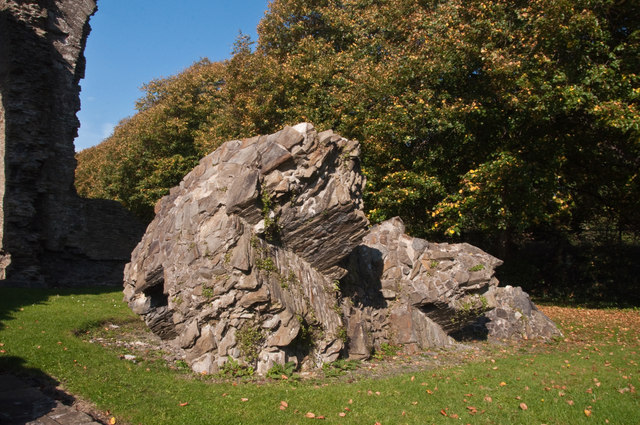Neath Abbey
Introduction
The photograph on this page of Neath Abbey by Mick Lobb as part of the Geograph project.
The Geograph project started in 2005 with the aim of publishing, organising and preserving representative images for every square kilometre of Great Britain, Ireland and the Isle of Man.
There are currently over 7.5m images from over 14,400 individuals and you can help contribute to the project by visiting https://www.geograph.org.uk

Image: © Mick Lobb Taken: 30 Sep 2011
The ruins, now in the care of Neath Port Talbot County Borough Council, are those of an abbey founded by Richard de Granville in 1130 and established as a ‘daughter house’ of that of Savigny in Normandy. All Sivigniac monasteries were absorbed into the Cistercian order in 1147 it and the Neath Abbey became quite a wealthy house after early economic difficulties. Its estate expanded as far as Devon, Somerset as well as the nearby county of Glamorgan. The community soon outgrew the original 12th-century buildings necessitating major reconstruction throughout the 13th and 14th centuries. The remains of the west range are relatively complete and date from 1170-1220. The lay brothers, the manual workers on the estate, initially occupied this. The abbey church was rebuilt in the period 1280 to 1330 and the high quality of the architecture can be seen in the remnants of the original building. Dissolved in 1539, the estate passed to Sir Richard Williams in 1542 and he was responsible for regenerating its fortunes and it was either him, or perhaps his son, who converted the south-eastern part of the cloister ranges into a grand mansion. This was built over the monk's dormitory and latrine, and is recognised today by its large rectangular windows of dressed stone. By 1600 property had passed to Sir John Herbert and it remained occupied throughout the 17th century. With the passage of time the abbey precinct was turned into a copper smelting and casting workshop but this in turn passed into history until, in the early 1920’s, the site was gradually cleared of the industrial debris that had accumulated from this period of its existence. Today the Abbey ruins offer a quiet retreat beside the Tennant Canal.We have Henry VIII to thank for these beautiful ruins, and others like it, but can only wonder at what glories they might have become had they not been destroyed.

